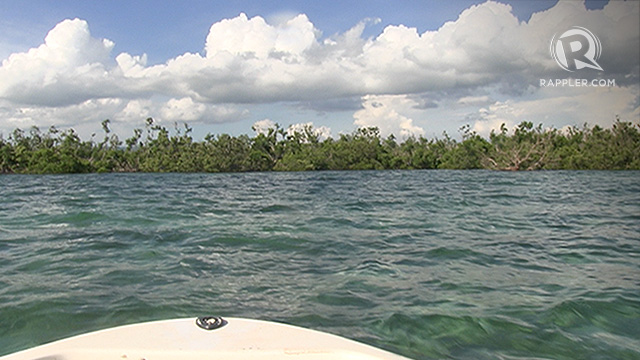SUMMARY
This is AI generated summarization, which may have errors. For context, always refer to the full article.

LEYTE, Philippines – Nature, as shown by the super typhoons that ravaged the Philippines, could be treacherous.
But nature, through environmental conservation, can be used to protect man from cruel elements.
David Lozada reports on how mangroves prevented the Haiyan storm surge from inflicting further damage on a coastal town.
This is the coast town of Palompon, Leyte.
The sea is calm, but residents know it can be treacherous.
A resident here for 15 years, Leticia Sumili says the sea can sometimes turn against them.
When Super Typhoon Yolanda made landfall, the sea swallowed most of the shanties along the coast, including Leticia’s home.
LETICIA SUMILI, PALOMPON RESIDENT: During Yolanda, we were all in the church and I thank the Lord that he saved us when the water got really high. They said there was a tidal wave so we ran to the church 2 days before the typhoon.
80% of Palompon’s infrastructure was destroyed. But the damage could’ve been worse.
DAVID LOZADA, REPORTING: Like many coastal towns in the Visayas, Palompon faced the danger of being wiped out by storm surges when Super Typhoon Yolanda struck in November 2013. But those mangroves protected the town from total destruction.
Some residents died from illness and falling coconuts.
No one died from the storm surge.
The town’s mangrove sanctuary in Tabuk Island protected the town from the 4-meter high waves.
Palompon environment officer Raoul Bacalla says the mangroves were initially put there to improve livelihood.
Tabuk island was declared a no man’s land to increase fish supply In 1996.
RAOUL BACALLA, PALOMPON ENVIRONMENT OFFICER: We protected that island in 1996 and after 17 years, people realized the importance of mangroves.
Palompon Mayor Ramon Oñate says climate change adaptation requires political will.
RAMON OÑATE, PALOMPON MAYOR: We are serious in our disaster preparedness initiatives so the people will really feel it. Being prepared pays off.
The town also improved its solid waste management program.
RAOUL BACALLA, PALOMPON ENVIRONMENT OFFICER: We don’t have garbage dumpsites in Palompon. We have an eco park.
Why? Because the biodegradable waste that you have in this area are not waste but raw materials for a bioreactor, converting biodegradable waste into fertilizer.
Officials say, what really helped Palompon survive is its strong focus on environmental protection.
RAOUL BACALLA, PALOMPON ENVIRONMENT OFFICER: Kung wala yung Tabuk marine park and wala yung effort namin to protect the mangroves, wala po yung Palompon. This is the lesson we have learned, a hard and tangible example before people. (If not for Tabuk marine park and our efforts to protect it, Palompon could have been wiped out. This is a hard and tangible lesson the people learned.)
David Lozada/ Rappler Palompon, Leyte.
– Rappler.com
Have a good story to tell about a group or individual involved in disaster preparedness and response education? Email us at move.ph@rappler.com.
The research for this case study was supported by the Friedrich Naumann Foundation for Freedom.
Check out the other case studies here:
- Tanay Mountaineers: A model of youth empowerment
- VIDEO REPORT: Tanay LGU and civil society work for disaster preparedness
- San Francisco: The island where all survived
- VIDEO REPORT: Disaster risk reduction in Camotes: The Purok system
- Pasig City: Learning from Ondoy, ready for the rain
- VIDEO REPORT: Pasig modernizes disaster management
- Palompon: A town saved by mangroves
- Rising from the rubble How Palompon is recovering from Yolanda

Add a comment
How does this make you feel?





There are no comments yet. Add your comment to start the conversation.